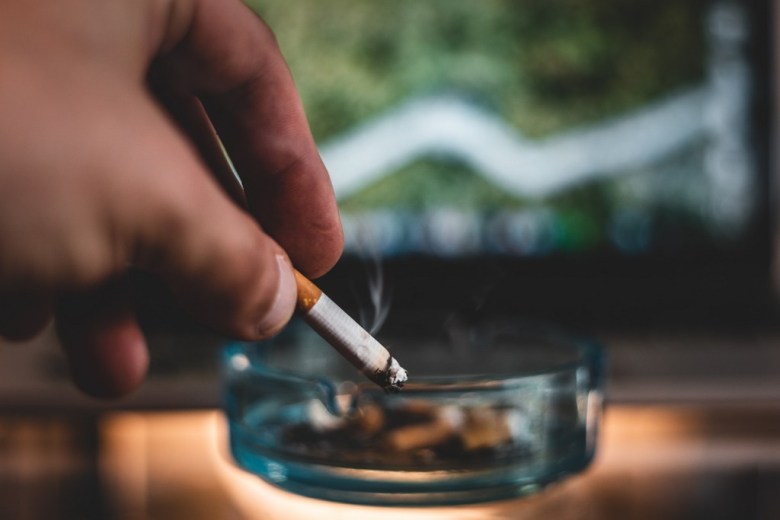
By Mylika Scatliffe
AFRO Women’s Health writer
The COVID-19 global pandemic brought to the forefront a plethora of disparities and inequities in minority communities. Smoking cessation aids and efforts are one such area of inequity. The Smoking Cessation Leadership Center (SCLC) at the University of California -San Francisco is working to reduce these disparities.
Pre-pandemic, minority communities including African Americans, Indigenous Peoples, and Latinos experienced stressors resulting from social determinants at a higher rate than white people, particularly as they relate to health care and systemic racism and discrimination.
One large area of disparity in black and brown communities is smoking cessation. The tobacco industry’s ultimate goal is to turn a large profit. They’ve historically achieved this goal by targeting minorities through predatory marketing. Minority communities such as African Americans, Indigenous peoples, and Latinos are devalued. This historic, systemic discrimination and racism is compounded by the effects of COVID-19.
Menthol cigarettes are used by 85% of African Americans that smoke. Menthol products have always been marketed to African Americans. Mentholated cigarettes are excellent starter products. They have a minty flavor and are easier to inhale, leading to earlier and easier addiction. According to Delmonte Jefferson, executive director of the Center for Black Health & Equity, tobacco marketing is targeted to African Americans using athletes and entertainers and even donations to events within the African-American community. Efforts to ban flavored cigarettes and vaping products were successful with the exception of menthol flavored products.
In the Latino community lung cancer and cardiovascular disease are the leading cause of death. Tobacco use is a huge factor in developing these illnesses. Latinos may have less access to health care than other communities, and where there is access to health care clinicians may not advise Latino patients against smoking or offer aid in smoking cessation. In addition, there are misconceptions about the risks of smoking, lack of knowledge about the effectiveness and use of smoking cessation tools, concerns about side effects and developing dependency, and cultural inclination towards quitting on their own without cessation aids. When cessation therapies are used within the Latino community, it’s at a lower rate than the overall population. Marcel de Dios, Assistant Professor of the Department of Psychological Health and Learning Sciences at the University of Houston confirms that Covid -19 combined with all these inequities exacerbates the effects of smoking on the Latino community.
There is a tiny nicotine plant known to some indigenous peoples, used for ceremonial purposes. The effects of colonization of this ceremonial and sacred plant were felt prior to the pandemic. The United States government passed a religious criminal code of Indian Offenses in 1883, which among other things prohibited indigenous peoples from performing their cultural and traditional practices involving ceremonial tobacco. Dr. Patricia Nez Henderson, a member of the Dine (Navajo) tribe and leading authority on tobacco control in American Indian communities stated, “It is very important to distinguish between the ceremonial and commercial use of the tobacco plant. This scared plant was colonized, additives put in it, mass produced for commercial sale and marketed to young indigenous people. Now we have some of the highest smoking rates in this country.”
Few smoking cessation aids have been developed to target indigenous peoples. Covid exposed some of the social and health inequities among indigenous peoples, such as lack of water and electricity. Underfunded health systems and limited access to health care services impact the availability of culturally relevant smoking cessation services. Indigenous healers are the first responders of the community, according to Dr. Henderson. They have the knowledge of the native plants, including ceremonial tobacco to aid in smoking cessation treatment.
The pandemic presented a unique opportunity for tribal nations to address high rates of smoking. Prior to the pandemic, fewer than 10 of the 455 tribally operated casinos provided a smoke free environment for patrons and workers. While most of them were shut down, tribal health advocates appealed to tribal leaders about operating the casinos with a smoke free environment. Now, more than 144 of the casinos reopened with smoke free environments. On November 6, 2021, the president of the Navajo Nation signed into law a comprehensive act that prohibits tobacco use in all public, tribally operated facilities such as casinos, rodeos, and parks among others.
In 2012, the Centers for Disease Control began a national media campaign aimed at promoting people quitting smoking. A smoking quitline was established, 1-800-QUIT-NOW, which led to state level quitlines for people looking for help to stop smoking. The campaign was highly effective in increasing calls, which ranged from 700,000-900,000 calls annually. In 2020 calls decreased by over 190,000 compared to 2019. Tobacco sales also increased, likely due to increased stressors brought on by the pandemic.
It appears Covid-19 is here to stay, or at least is not going away any time soon. There is no better time to quit smoking according to the SCLC. Smoking weakens the immune system and damages the lungs. This makes it harder to recover from Covid-19 and smokers are more likely to end up in the ICU, need a ventilator and are more likely to die.
There are resources, such as quitlines and apps, available to assist with quitting smoking. For more information on smoking cessation assistance, visit the SCLC website at smokingcessationleadership.ucsf.edu/icovidquit.
Help us Continue to tell OUR Story and join the AFRO family as a member – subscribers are now members! Join here!
The post Smoking cessation and health and social inequities in communities of Color appeared first on AFRO American Newspapers .











